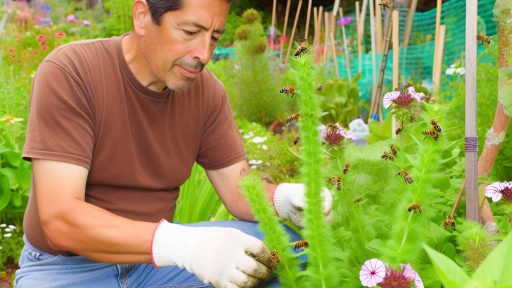Introduction to Community Supported Agriculture
Community Supported Agriculture, or CSA, connects consumers directly with farmers.
This model fosters a relationship built on trust and shared commitment.
Members pay upfront for a share of the harvest.
In return, they receive fresh produce throughout the growing season.
Communication Needs in CSA
Effective communication is essential for the success of any CSA.
It ensures transparency between farmers and consumers.
Moreover, it helps in managing expectations and building community.
Clarifying Responsibilities
Farmers and members must clearly understand their roles.
Farmers need to communicate production schedules.
Members should know how and when to pick up their shares.
Sharing Information and Resources
Regular updates are vital for a successful CSA.
Farmers should provide information about growing conditions.
They can share recipes and tips for using the produce.
Building Community Engagement
Organizing community events strengthens relationships.
Workshops can educate members about sustainable practices.
Transform Your Agribusiness
Unlock your farm's potential with expert advice tailored to your needs. Get actionable steps that drive real results.
Get StartedSocial media can also serve as a platform for interaction.
The Role of Effective Communication in Building Trust Among CSA Members
Importance of Transparent Communication
Transparent communication fosters a sense of community among CSA members.
When members have access to information, they feel valued and involved.
This approach helps reduce misunderstandings and builds credibility.
Furthermore, regular updates about farm activities keep everyone informed.
Creating Open Channels for Feedback
Open channels encourage members to voice their opinions and concerns.
This feedback loop demonstrates that member input is valued.
Additionally, addressing feedback timely can prevent potential issues.
It also reinforces the commitment of the CSA management to the community.
Sharing Success Stories and Challenges
Sharing both successes and challenges creates authenticity.
When members see the real journey of the farm, they connect deeper.
Additionally, highlighting milestones encourages further engagement.
Moreover, discussing challenges creates empathy and understanding.
Utilizing Various Communication Tools
Different members may prefer different forms of communication.
Some may prefer newsletters, while others like social media updates.
By diversifying communication tools, the CSA can reach more members.
This flexibility helps ensure important information is disseminated effectively.
Cultivating an Inclusive Environment
Inclusive communication invites all members to participate actively.
This approach can include language translations or accessibility options.
Additionally, hosting events where everyone can share experiences is essential.
Such efforts enhance the sense of belonging among CSA members.
Types of Communication in CSA
Verbal Communication
Verbal communication forms the backbone of CSA interactions.
Farmers often deliver updates at pick-up sites.
Members can engage in discussions during farm tours.
Showcase Your Farming Business
Publish your professional farming services profile on our blog for a one-time fee of $200 and reach a dedicated audience of farmers and agribusiness owners.
Publish Your ProfileEffective dialogue fosters a sense of community.
Moreover, verbal feedback can enhance the relationship between farmers and members.
Written Communication
Written communication serves as a critical tool in CSA initiatives.
Newsletters provide timely updates on crop availability.
Farmers can share recipes and storage tips through written materials.
Additionally, handouts may include details about upcoming events.
Clear, concise writing keeps members informed and engaged.
Digital Communication
Digital communication has transformed how CSAs interact.
Social media platforms offer immediate updates and engagement.
Farmers can share photos and successes in real-time.
Email newsletters reach members directly in their inboxes.
Furthermore, dedicated websites provide comprehensive information about services.
Using multiple digital channels ensures broader outreach.
Find Out More: Effective Crop Selection Strategies for CSAs
Best Practices for Farmer-to-Member Communication
Establish Clear Channels
Farmers should create defined communication channels.
These channels could be email, newsletters, or dedicated apps.
Using multiple platforms increases accessibility for members.
Additionally, ensure that members understand how to use these tools.
Regular Updates
Send regular updates about the farm’s progress.
This helps keep members informed about what they can expect.
Include seasonal changes, crop availability, and events.
Consistent communication builds trust and anticipation.
Encourage Member Feedback
Soliciting feedback fosters engagement among members.
Use surveys or feedback forms to gather insights.
Acting on member suggestions shows responsiveness.
Consequently, members feel valued and involved in the community.
Personalize Communication
Personalized messages enhance the connection with members.
Address members by name and tailor content to their preferences.
Highlight specific activities or products that align with their interests.
This approach makes communication feel more meaningful and direct.
Share Educational Content
Providing educational resources empowers members.
Consider sharing recipes, farm tours, or gardening tips.
Also, offer insights into the farming process and sustainability practices.
Such content enriches the member experience and builds community knowledge.
Utilize Visual Content
Incorporate images and videos to enhance communication.
Visuals can effectively showcase the farm’s products and events.
They can also highlight the beauty of the farming process.
As a result, visual content makes information more engaging.
Host Community Events
Organize events that bring members together.
This could include farm tours, workshops, or seasonal celebrations.
Showcase Your Farming Business
Publish your professional farming services profile on our blog for a one-time fee of $200 and reach a dedicated audience of farmers and agribusiness owners.
Publish Your ProfileSuch gatherings help build relationships and strengthen community ties.
Encourage open discussions during these events to foster engagement.
Find Out More: Water Conservation Tips for Small Farm Success
Strategies for Engaging Members through Newsletters and Social Media
Utilizing Newsletters Effectively
Newsletters are powerful tools for CSA communication.
They provide timely updates on farm activities.
Members anticipate news about produce availability.
Include engaging stories about farm life.
This approach fosters a personal connection with members.
Highlight member profiles and testimonials.
These features create a sense of community.
Ensure newsletters are visually appealing.
Use high-quality images of crops and activities.
Consistent formatting enhances readability.
Creating a Regular Schedule
Establish a regular scheduling for newsletters.
This keeps members informed throughout the season.
Consider sending newsletters bi-weekly or monthly.
Announce important dates like harvest day or events.
This will build anticipation for upcoming offerings.
Consistency in timing also boosts engagement.
Leveraging Social Media for Community Engagement
Social media platforms are essential for real-time updates.
Use Facebook, Instagram, and Twitter to connect.
Share behind-the-scenes glimpses of farm operations.
This transparency builds trust with members.
Encourage members to share their own experiences.
Feature user-generated content to foster community.
Running Interactive Campaigns
Engage members through contests and polls on social media.
These activities increase participation and excitement.
Ask members to vote on new crop selections.
Include fun challenges like recipe contests.
Celebrating participants encourages more involvement.
Gathering Feedback
Solicit feedback via surveys in newsletters and social media.
Understand what members enjoy most about the CSA.
Use this information to tailor content and offerings.
Actively show members that their opinions matter.
This will strengthen their commitment to the CSA.
You Might Also Like: Local Food Sourcing Benefits for Community Farms

Conflict Resolution in CSA: Maintaining Relationships Through Effective Communication
Importance of Communication in CSA
Effective communication serves as the backbone of Community Supported Agriculture (CSA).
It fosters trust and collaboration among farmers and members.
Furthermore, clear communication helps prevent misunderstandings.
Regular updates keep everyone informed and engaged.
Showcase Your Farming Business
Publish your professional farming services profile on our blog for a one-time fee of $200 and reach a dedicated audience of farmers and agribusiness owners.
Publish Your ProfileCommon Sources of Conflict
Conflicts often arise from unmet expectations.
Members may expect more produce than the farm can provide.
Moreover, differences in values can lead to disagreements.
For instance, some members may prioritize organic practices over yield.
Strategies for Effective Communication
Active listening is crucial in resolving conflicts.
It involves understanding the feelings and perspectives of others.
Additionally, establishing clear communication channels enhances dialogue.
Regular meetings or updates can achieve this goal.
Role of Transparency
Transparency builds trust within the CSA community.
Sharing information about farming practices helps members feel connected.
Moreover, providing insights into financial matters enhances accountability.
Conflict Resolution Techniques
Negotiation encourages collaborative problem-solving.
By finding common ground, all parties can benefit.
Mediation can also facilitate discussions between conflicting parties.
A neutral third party often helps clarify issues and propose solutions.
Building a Supportive Community
Creating a supportive environment aids conflict resolution.
Members should feel comfortable expressing their concerns.
Furthermore, fostering a sense of belonging strengthens relationships.
Cultivating shared goals brings the community closer together.
See Related Content: Ethical Farming And Environmental Impact
Importance of Feedback Loops
Gathering Member Input
Effective communication starts with gathering feedback from members.
Members often have valuable insights about their experiences.
Surveys provide a structured way to collect this information.
Use digital tools to make it easy for members to respond.
Additionally, face-to-face meetings can foster deeper discussions.
Consider hosting seasonal gatherings for open dialogue.
Incorporating Feedback
Collecting feedback is just the first step.
Incorporating that feedback into decisions is crucial.
Communicate changes based on member input to show responsiveness.
This helps build trust and reinforces community bonds.
Provide regular updates about how suggestions are implemented.
Engage members in discussions about future initiatives.
Continuous Improvement
Feedback loops foster a culture of continuous improvement.
Encourage members to share their thoughts often.
This enables a cycle of reflection and adjustment over time.
Recognize and thank members for their contributions publicly.
Such recognition motivates others to provide input.
In doing so, the community thrives as a collaborative effort.
Case Studies of Successful Communication Practices in Various CSAs
Local Harvest CSA
Local Harvest CSA created an engaging newsletter for members.
The newsletter includes seasonal recipes and farm updates.
Showcase Your Farming Business
Publish your professional farming services profile on our blog for a one-time fee of $200 and reach a dedicated audience of farmers and agribusiness owners.
Publish Your ProfileMembers enjoy learning about new crops and harvesting techniques.
This approach fosters a personal connection with the community.
Green Fields CSA
Green Fields CSA hosts regular farm tours to engage members.
These tours allow members to see farming practices firsthand.
Members appreciate the opportunity to ask questions directly.
Subsequently, this builds trust between farmers and consumers.
Fresh Future Farm
Fresh Future Farm utilizes social media to communicate effectively.
They share updates on crop availability and community events.
This real-time information keeps community members engaged.
Moreover, it encourages feedback from their audience.
Riverbend Community Farm
Riverbend Community Farm employs a member-driven feedback system.
They regularly survey members about their preferences.
This feedback shapes their offerings for the upcoming seasons.
As a result, they actively adjust to meet community needs.
Harvest Together CSA
Harvest Together CSA organizes seasonal potluck events.
These gatherings encourage members to share experiences and ideas.
Additionally, they stimulate discussions about sustainable practices.
Ultimately, these events strengthen the sense of community.
Wildflower CSA
Wildflower CSA implements workshops on food preservation.
These workshops teach members how to maximize their harvest.
Participants leave with valuable skills and knowledge.
Thus, the CSA enhances member loyalty and participation.
Additional Resources
Farm to Table: Building Local and Regional Food Systems – SARE
The Local Food Movement: Definitions, Benefits & Resources | USU




